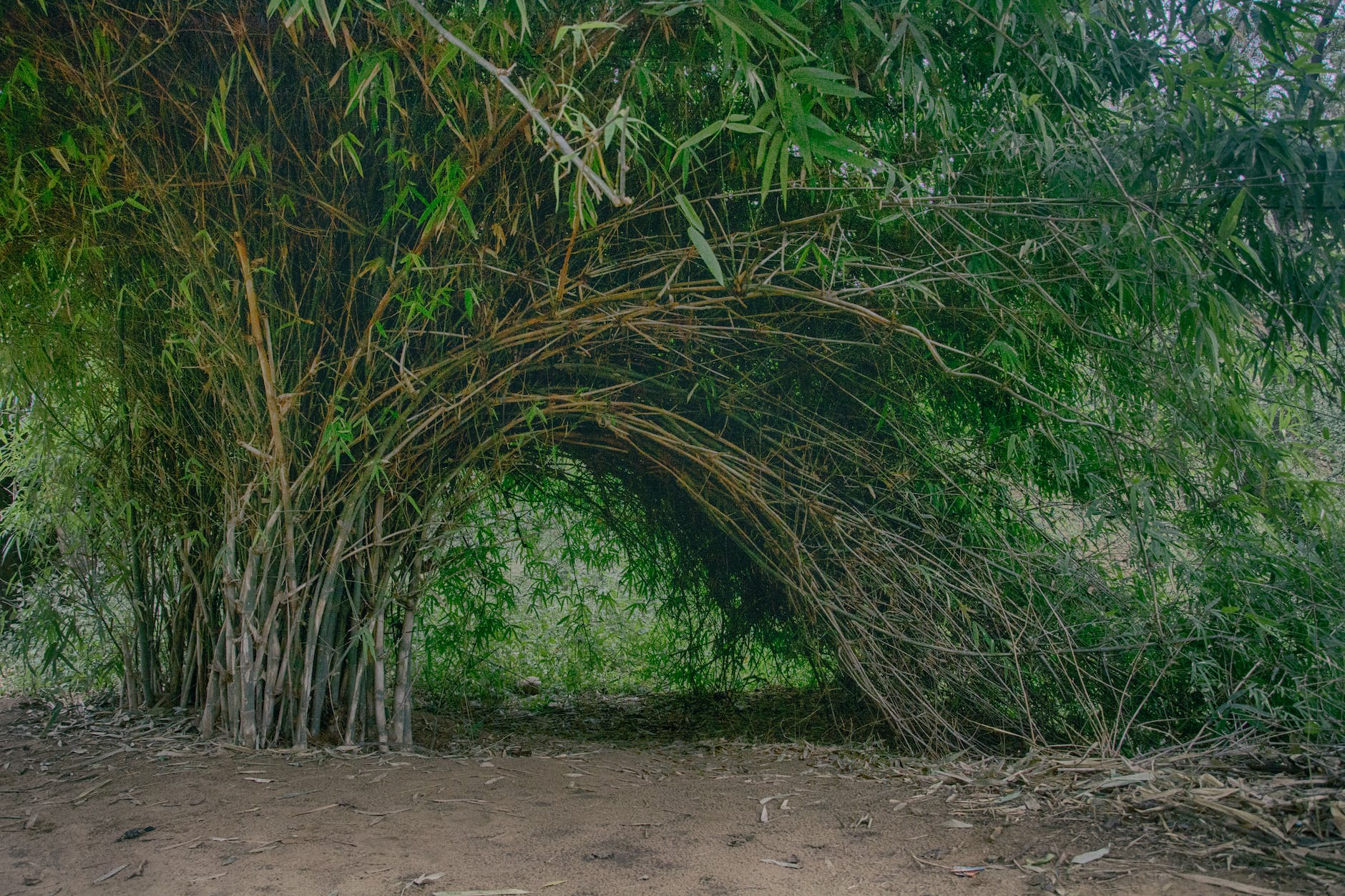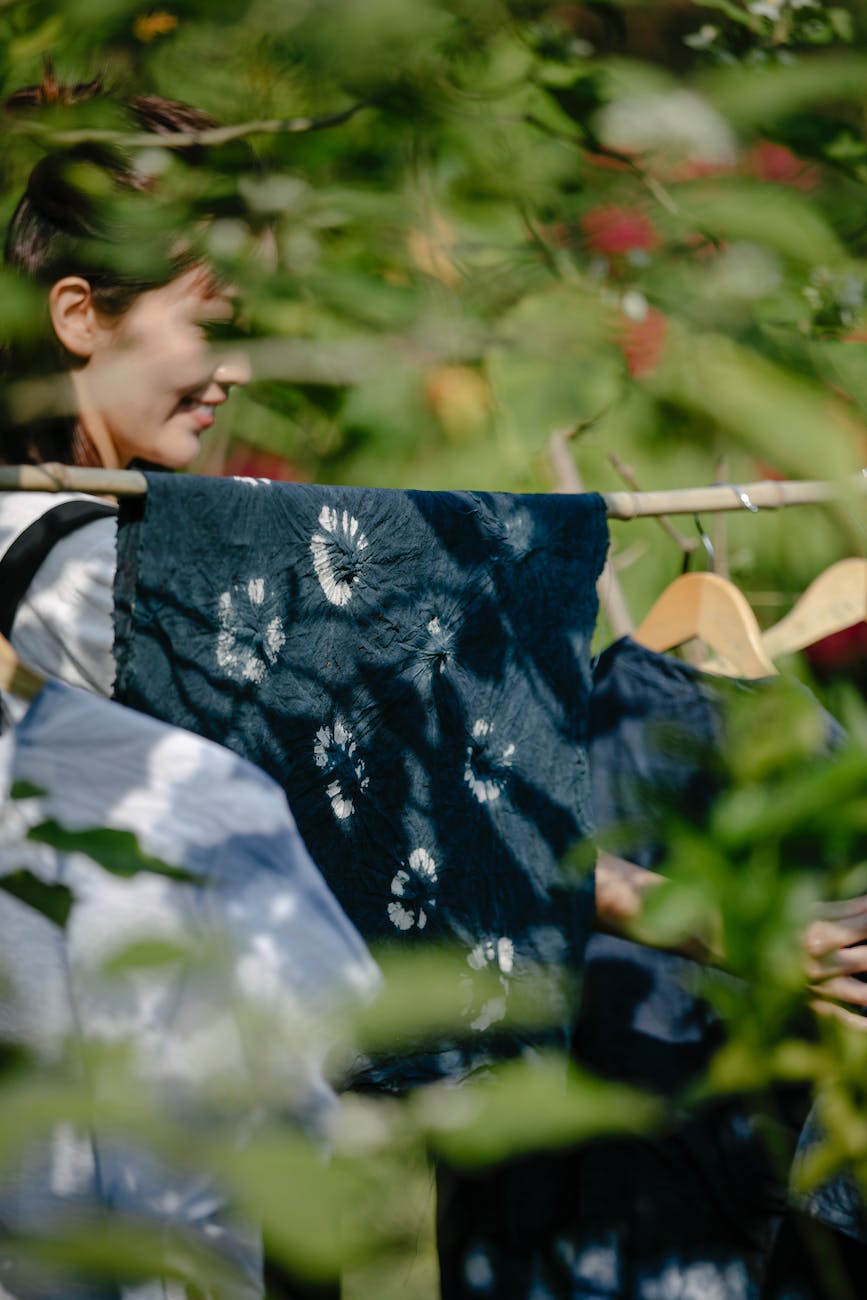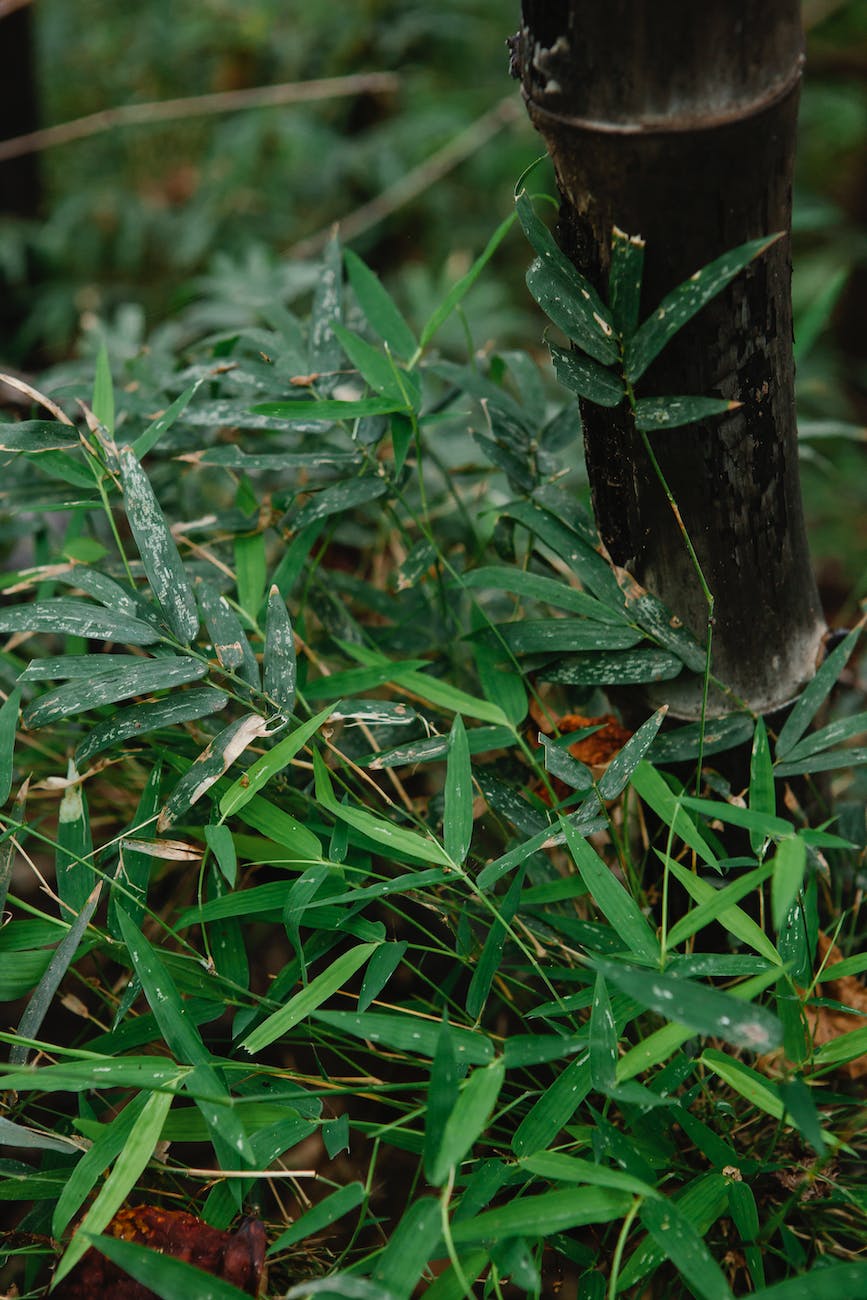In today’s world, where sustainability and eco-consciousness are more than just buzzwords, bamboo clothing is emerging as a game-changer in the fashion industry. Bamboo clothes offer an innovative blend of environmental friendliness, comfort, and style, setting new standards for what it means to dress sustainably.
This shift towards bamboo fabric is not just a fleeting trend; it represents a fundamental change in how we view and choose our clothing.
Bamboo clothing stands at the forefront of this sustainable fashion revolution. Made from the fibers of the bamboo plant, these clothes are gaining popularity for their minimal environmental impact and numerous benefits for the wearer.
Unlike traditional textiles, bamboo clothes are produced in a way that is much kinder to the planet. The process of growing bamboo for fabric requires significantly less water and no harmful pesticides or fertilizers, making it a much more sustainable option than conventional cotton or synthetic materials.
Moreover, bamboo clothing is not just about environmental benefits. It also brings a level of comfort and practicality that is hard to find in other materials. Known for its softness, breathability, and durability, bamboo fabric is ideal for a wide range of clothing items – from casual wear to athletic apparel. This versatility makes bamboo clothes suitable for any lifestyle, appealing to a broad audience of eco-conscious consumers.
In this introduction to bamboo clothing, we will explore the various facets that make bamboo clothes a smart and responsible choice for those looking to make a positive impact on the environment without compromising on quality or style.
As we delve deeper into the world of bamboo textiles, it becomes clear why bamboo clothing is fast becoming a staple in the wardrobes of the environmentally and fashion-conscious alike.
The Eco-Friendly Superpowers of Bamboo
Bamboo, often mistaken for a woody tree, is in fact a member of the grass family and is one of the planet’s most prodigious and versatile plants. It is hailed as a ‘superplant’ for its exceptional environmental benefits and rapid growth cycle. This remarkable plant has the innate ability to absorb carbon dioxide and can produce up to 35% more oxygen than an equivalent group of trees, making it a powerhouse in the global effort to mitigate climate change.
The growth rate of bamboo is nothing short of spectacular. Some species have the ability to grow three to four feet in just 24 hours, a pace that is nearly unmatched in the plant kingdom. This rapid growth allows bamboo to reach maturity and be ready for harvest in a fraction of the time it takes for trees to grow, which can be upwards of 20 to 50 years. Bamboo can generally be harvested for industrial use in just three to five years, offering a sustainable and rapidly renewable resource.
Moreover, bamboo’s resilience and hardiness make it an ideal candidate for reforestation and afforestation projects. It can thrive in diverse climates and soil conditions, often without the need for fertilizers or pesticides, thereby reducing the reliance on harmful chemicals that can lead to further environmental degradation.
Bamboo’s sustainability is further underscored by its root system. Unlike trees that need to be replanted once harvested, bamboo’s root system remains intact even after cutting, allowing new shoots to grow back and preventing soil erosion. This quality not only helps maintain the health and structure of the ecosystem but also ensures that bamboo can continue to absorb carbon dioxide and contribute positively to the carbon cycle.
In the context of global warming and environmental degradation, the role of bamboo as a superplant becomes increasingly critical. Its ability to grow quickly, sequester carbon efficiently, and provide a sustainable source of material for a wide range of products presents a compelling case for its integration into agricultural and industrial practices worldwide. Bamboo isn’t just growing – it’s growing with a purpose, offering a beacon of hope for a greener future.
Bamboo’s Agricultural Advantage

Bamboo’s natural resilience and low-maintenance growth are what set it apart from many other crops, making it an eco-friendly champion in sustainable agriculture and forestry. One of the most striking features of bamboo is its ability to flourish without the intensive inputs that are often associated with conventional farming. When not grown as a food source, bamboo requires no artificial irrigation, pesticides, or fertilizers to thrive. This aspect of bamboo cultivation is a significant boon for environmental conservation, as it minimizes the ecological footprint often associated with agricultural practices.
The absence of a need for chemical pesticides and fertilizers is particularly noteworthy. Many agricultural crops demand extensive chemical treatments to ward off pests and diseases, but bamboo’s natural resistance reduces such dependencies. This characteristic is vitally important for environmental health as it means there is a much lower risk of harmful chemicals leaching into the soil and waterways. This reduction in chemical use not only preserves the immediate ecosystem around the bamboo but also protects the quality of groundwater and prevents the contamination of rivers and lakes, which are vital sources of water for both human use and wildlife.
In addition, bamboo’s root systems play a pivotal role in soil conservation. Unlike many other plants, when bamboo is harvested, its roots are left intact in the ground. This root system, which remains alive and active, continues to bind the soil, thus preventing erosion and loss of topsoil. Soil erosion is a significant environmental problem, leading to loss of fertile land, increased pollution in waterways, and a decrease in biodiversity. Bamboo’s ability to secure the soil contributes to the maintenance of healthier ecosystems and aids in the preservation of land for future agricultural use.
Furthermore, these root systems help in maintaining the structure of the soil. They create a natural barrier, reducing the runoff of water during heavy rains and thereby decreasing the likelihood of landslides and other forms of land degradation. This characteristic is particularly beneficial in areas prone to heavy rainfall or on slopes where the risk of soil erosion is high.
Bamboo’s minimal need for water also positions it as an ideal crop in regions facing water scarcity. Unlike many crops that require significant watering, bamboo’s ability to grow in a range of climatic conditions, including areas with limited water resources, makes it a sustainable choice in arid and semi-arid regions.
Versatility of Bamboo in Products

Bamboo’s versatility and remarkable strength have long been utilized in various industries, from construction to homeware. However, its foray into the fashion world marks a new era of sustainable textile production, reflecting a growing demand for eco-friendly and ethical clothing options.
In the fashion industry, bamboo is celebrated for its soft, luxurious feel, often compared to high-end fabrics like silk and cashmere. Yet, it’s the sustainable attributes of bamboo that truly set it apart in a sector increasingly scrutinized for its environmental impact. Bamboo fabric is produced from the pulp of bamboo grass, a process that is generally more eco-friendly than the manufacturing of traditional textiles.
The strength of bamboo fibers contributes to the durability of the clothing made from it. Garments crafted from bamboo are not only comfortable but also long-lasting, reducing the need for frequent replacements and thereby lessening the overall environmental impact of our wardrobes. This durability is paired with bamboo’s natural breathability and moisture-wicking properties, making it an ideal material for a wide range of clothing – from everyday wear to athletic apparel.
Moreover, bamboo’s inherent antibacterial and hypoallergenic qualities have made it a preferred choice for those with sensitive skin or allergies. Unlike synthetic fabrics that may contain irritants, bamboo clothing offers a gentler alternative, reducing the risk of skin irritation and providing comfort to the wearer.
The fashion industry’s embrace of bamboo extends to a diverse range of products. Beyond clothing, bamboo fibers are used in the production of accessories such as hats, socks, and scarves, as well as in home textiles like bed linens and towels. This versatility demonstrates the potential of bamboo as a sustainable alternative to more conventional materials like cotton and polyester, which often require extensive water, pesticides, and energy for production.
Bamboo’s use in the fashion sector also aligns with the growing trend of circular fashion. As a biodegradable material, bamboo clothing can decompose naturally at the end of its life cycle, returning to the ecosystem without leaving harmful residues. This feature is particularly significant in an industry grappling with the challenge of waste and the disposal of non-biodegradable synthetic textiles.
Bamboo Clothing: A Sustainable Fashion Statement

In the rapidly evolving world of fashion, where sustainability is becoming increasingly paramount, bamboo clothing emerges not just as a trend, but as a profound statement of environmental responsibility. This shift toward bamboo textiles is reflective of a growing awareness within the industry and among consumers about the ecological footprint of our clothing choices.
The sustainability credentials of bamboo are indeed impressive. From its cultivation to its processing into fabric, bamboo requires significantly fewer resources compared to traditional textile crops like cotton. Bamboo grows rapidly and naturally in diverse climates without the need for extensive irrigation or harmful pesticides and fertilizers. This aspect of bamboo cultivation makes it a highly renewable resource, reducing the strain on water resources and avoiding the contamination of ecosystems with agricultural chemicals.
Moreover, the processing of bamboo into fabric, while it does require certain chemical inputs, is evolving with technological advancements that are making it more eco-friendly. There are methods being developed and used that recycle and reuse water and solvents, reducing the environmental impact of the manufacturing process.
The end product, bamboo fabric, is not only soft, durable, and comfortable but also fully biodegradable. In an industry often criticized for its contribution to landfill waste, the biodegradability of bamboo clothing stands out. When disposed of, bamboo garments decompose naturally without leaving harmful residues, a stark contrast to synthetic fibers that can take hundreds of years to break down.
Bamboo’s natural properties also lend themselves to sustainable fashion in other ways. The fabric’s breathability, moisture-wicking, and antibacterial qualities make it suitable for a wide range of clothing, from casual wear to athletic apparel, reducing the need for frequent washing and thus saving energy and water over the garment’s lifecycle.
Furthermore, bamboo clothing caters to a growing consumer base that is not only environmentally conscious but also values ethical production practices. The bamboo industry provides an alternative to the often problematic supply chains associated with traditional textiles, promoting more ethical labor practices and supporting sustainable farming communities.
The Comfort and Durability of Bamboo Fabric

Bamboo fabric is rapidly gaining popularity not only for its environmental benefits but also for its remarkable comfort and durability. This unique combination is what sets bamboo apart in the textile industry, offering a luxurious experience without the luxury price tag.
One of the most notable qualities of bamboo fabric is its exceptional softness. The texture of bamboo fibers is naturally smooth and round, without any sharp spurs to irritate the skin. This results in a material that is incredibly gentle, often likened to the feel of silk or cashmere. This softness makes bamboo clothing especially appealing for people with sensitive skin, as it reduces the likelihood of irritation and discomfort.
However, the benefits of bamboo fabric go beyond just its silky touch. Bamboo is incredibly durable, a quality not always associated with soft, comfortable fabrics. The fibers of bamboo are strong and resilient, which means that garments made from bamboo can withstand regular wear and washing without losing their shape or feel. This resilience contributes to the longevity of bamboo clothing, making it a sustainable choice not just in terms of production but also in terms of its lifecycle as a garment.
Additionally, bamboo fabric maintains its color and texture well over time, resisting fading and pilling. This long-lasting quality ensures that bamboo garments remain looking new and fresh even after multiple washes, enhancing their appeal as a practical choice for everyday wear. The ability of bamboo clothing to endure the test of time also makes it an economically savvy choice. While the initial cost might be higher than some conventional materials, the extended lifespan of bamboo clothing means fewer replacements are needed, ultimately saving money in the long run.
Bamboo’s practicality extends to its care as well. Unlike some luxury materials that require special cleaning methods, bamboo fabric is typically machine washable and can be tumble-dried, simplifying the care process and saving time and resources. This ease of maintenance, combined with its durability, makes bamboo clothing an ideal choice for busy lifestyles.
Practical Benefits of Bamboo Clothing

The increasing popularity of bamboo clothing can be attributed not just to its sustainable properties, but also to the numerous practical benefits it offers to the everyday wearer. Its low-maintenance nature is a key factor that adds to its appeal in a fast-paced world where ease and convenience are highly valued.
One of the most significant practical benefits of bamboo clothing is its ease of care. Unlike more traditional luxury fabrics that often require special cleaning methods, such as dry cleaning, bamboo garments can be conveniently cared for with a simple machine wash. This easy-care feature is not only a time-saver but also more environmentally friendly. Dry cleaning uses chemical solvents that can be harmful to the environment and the workers who handle them. By reducing the need for dry cleaning, bamboo clothing minimizes exposure to these chemicals and lessens the environmental impact.
In addition to being machine washable, bamboo clothing is known for its durability during the wash cycle. The fibers maintain their strength and do not easily break down or lose shape, ensuring that the clothing remains intact and looks new for longer periods. This durability also means that bamboo clothing doesn’t require the gentle cycle or special detergents, further simplifying the laundering process.
Moreover, bamboo fabric naturally resists staining and water damage. This resistance is particularly beneficial for those leading active, busy lifestyles or for parents with young children. It means less time worrying about spills and stains, and more time enjoying life’s activities without the concern of ruining clothing. This stain resistance also translates to fewer washes needed, which is not only convenient but also eco-friendly, as it conserves water and reduces detergent use.
Bamboo clothing is also known for its ability to wick moisture away from the body, a feature that enhances comfort, especially during physical activities. This moisture-wicking property ensures that sweat is drawn away from the skin, leaving the wearer feeling dry and comfortable. This feature is particularly appealing to athletes or individuals who live in warmer climates.
Another practical aspect of bamboo clothing is its adaptability to different weather conditions. Bamboo fibers have insulating properties, meaning they can keep the wearer warm in cooler temperatures while also being breathable enough to wear in warmer weather. This versatility makes bamboo clothing suitable for a wide range of climates and seasons.
Thermal Regulation and Moisture Wicking

Bamboo clothing’s ability to offer thermal regulation is one of its standout features, making it an exceptionally versatile fabric suitable for a variety of climates and activities. This unique characteristic stems from the inherent properties of bamboo fibers, which have a remarkable ability to adapt to different temperatures.
During the hot summer months, bamboo clothing excels in keeping the wearer cool and comfortable. The structure of bamboo fibers allows for excellent breathability, meaning air can flow freely through the fabric, preventing the buildup of heat and providing a natural cooling effect. This breathability is especially beneficial in high temperatures, where maintaining a lower body temperature is key to comfort.
Conversely, in colder weather, bamboo fabric provides a surprisingly warm layer. The fibers have insulating properties, trapping warm air close to the skin and maintaining body heat. This natural insulation ensures that bamboo clothing provides warmth in winter, making it an ideal choice for layering.
In addition to its temperature-regulating abilities, bamboo clothing is renowned for its moisture-wicking properties. This is particularly important for those who lead an active lifestyle or for wear during physical exercise. When the body sweats, bamboo fabric effectively draws moisture away from the skin and disperses it across the surface of the fabric, facilitating quicker evaporation. This wicking action keeps the wearer dry and comfortable, avoiding the unpleasant feeling of damp fabric sticking to the skin.
The moisture-wicking capability of bamboo clothing also contributes to better hygiene. By moving sweat away from the skin and reducing dampness, bamboo clothing creates an environment that is less conducive to bacterial growth. This means that the fabric stays fresher for longer, reducing the likelihood of developing unpleasant odors and making it an excellent choice for workout gear and everyday wear alike.
Moreover, the thermal regulation and moisture-wicking features of bamboo clothing make it a favorite among travelers and outdoor enthusiasts. Its ability to adapt to varying temperatures and keep the wearer dry and comfortable makes it suitable for a wide range of environments, from urban settings to outdoor adventures.
Health and Skin-Friendly Qualities

The health and skin-friendly qualities of bamboo clothing are increasingly recognized as key benefits, especially in a world where skin sensitivities and health concerns are prevalent. Bamboo fabric’s natural properties make it a superior choice for those seeking comfort, safety, and health benefits in their clothing choices.
One of the most significant health benefits of bamboo clothing is its hypoallergenic nature. Bamboo fabric is naturally gentle, making it an ideal choice for people with sensitive skin or those prone to allergies. Traditional fabrics, particularly synthetics, can often irritate the skin, leading to discomfort, rashes, or allergic reactions. Bamboo, on the other hand, with its smooth fibers and lack of harsh chemical treatments, provides a soothing alternative. This reduces the risk of skin irritation, allowing those with sensitive skin to wear bamboo clothing with confidence and comfort.
Another important health benefit of bamboo clothing is its natural UV protection. Bamboo fibers have the unique ability to provide protection against the sun’s harmful ultraviolet rays. This UV resistance is especially beneficial in outdoor wear, as it adds an extra layer of protection against sun damage. While it doesn’t replace sunscreen entirely, bamboo clothing can significantly reduce the amount of direct UV exposure, which is crucial in preventing skin damage and long-term risks such as skin cancer. This feature is particularly advantageous for individuals who spend a significant amount of time outdoors, whether for work, exercise, or leisure.
Furthermore, bamboo fabric’s breathability and moisture-wicking properties contribute to overall skin health. By allowing air to circulate freely and wicking sweat away from the skin, bamboo clothing helps to keep the skin dry and cool. This reduces the potential for bacterial growth and skin infections, which can be a problem in more humid environments or during strenuous activities.
Bamboo clothing also offers a chemical-free option to those concerned about the impact of dyes and treatments found in conventional textiles. Many bamboo garments are made using organic and natural dyes, minimizing exposure to potentially harmful chemicals. This aspect is particularly important for those with chemical sensitivities or for parents seeking safer clothing options for their children.
Bamboo Clothing in the Market

The surge in demand for sustainable and eco-friendly fashion has significantly influenced the availability of bamboo clothing in the market. As awareness of the environmental and health benefits of bamboo fabric grows, an increasing number of designers and brands are incorporating this versatile material into their collections. Today, consumers interested in bamboo clothing have a wealth of options to choose from, reflecting the material’s versatility and growing popularity.
The range of bamboo products available in the market is extensive and diverse. For everyday wear, there are basic staples like t-shirts, which are popular due to their softness, breathability, and durability. These t-shirts are not only comfortable but also versatile, suitable for a variety of occasions and styles. Similarly, bamboo leggings, socks, and underwear have become favorites for their comfort and hypoallergenic properties, making them ideal for sensitive skin.
Beyond the basics, the bamboo clothing market also offers more elaborate and fashionable items. Dresses made from bamboo fabric are increasingly sought after, known for their elegant drape and luxurious feel that rivals more traditional, high-end materials. These dresses combine the practical benefits of bamboo – such as comfort and durability – with contemporary design, making them suitable for both casual and formal settings.
In addition to adult clothing, bamboo fabric is also making its mark in the children’s wear market. The hypoallergenic and soft nature of bamboo makes it particularly suitable for children’s sensitive skin. Bamboo baby clothes, blankets, and bedding are growing in popularity among parents who prioritize both comfort and environmental consciousness in their purchasing decisions.
Athletic and activewear is another sector where bamboo clothing is gaining traction. The moisture-wicking and thermal-regulating properties of bamboo make it ideal for sportswear. Bamboo yoga pants, workout tops, and even sports bras offer athletes and fitness enthusiasts an eco-friendly alternative to synthetic materials, without compromising on performance or comfort.
Moreover, the fashion industry’s shift towards sustainability has led to the emergence of high-end fashion brands that specialize in bamboo clothing. These brands are redefining luxury fashion with a focus on ethical and sustainable practices, offering everything from tailored suits to exquisite evening wear made from bamboo fabric.
The growth of the bamboo clothing market is not just a trend but a reflection of a broader shift in consumer preferences towards more sustainable and ethical fashion choices. As this market continues to expand, it is likely that bamboo clothing will become a staple in wardrobes around the world, known for its unique blend of comfort, sustainability, and style.
Making the Sustainable Choice with Bamboo Clothing

Opting for bamboo clothing represents a conscious decision to embrace a more sustainable and environmentally friendly approach to fashion. This choice goes beyond mere preference for a type of fabric; it’s a statement about one’s values and commitment to a greener, more responsible lifestyle. The numerous advantages that bamboo clothing offers make it an increasingly popular option for those who are mindful of their environmental footprint while still desiring quality and comfort in their apparel.
One of the primary benefits of choosing bamboo clothing is its minimal impact on the environment. The cultivation of bamboo is a remarkably eco-friendly process. Bamboo plants grow rapidly and naturally without needing excessive water, pesticides, or fertilizers, which means that their cultivation has a lower environmental impact compared to conventional cotton or synthetic fibers. By choosing clothing made from bamboo, consumers are supporting agricultural practices that are more sustainable and kinder to the planet.
Moreover, bamboo’s biodegradability is a significant factor in its sustainability. In a world grappling with the issue of textile waste, the choice of biodegradable materials like bamboo is a step towards reducing this environmental burden. When bamboo clothing eventually reaches the end of its life, it can decompose naturally without leaving harmful residues in the environment, unlike synthetic materials that contribute to landfill issues.
The sustainability of bamboo clothing is also enhanced by its durability. Bamboo fibers are naturally strong, which means that garments made from bamboo tend to last longer than those made from other materials. This longevity reduces the need for frequent replacements, thereby decreasing overall consumption and waste.
From the perspective of the wearer, bamboo clothing offers numerous advantages in terms of comfort and health. The softness of bamboo fabric, combined with its hypoallergenic properties, makes it gentle on the skin, reducing the risk of irritation and allergies. Its natural moisture-wicking and thermal-regulating capabilities provide additional comfort, making bamboo clothing suitable for a range of climates and activities.
Furthermore, embracing bamboo clothing aligns with the growing consumer trend towards ethical and responsible fashion. By choosing bamboo, consumers are often supporting smaller, more sustainable brands and businesses that prioritize ethical practices in their production and supply chains. This shift in consumer demand encourages more brands to consider sustainable practices, leading to a broader positive impact on the fashion industry as a whole.
Conclusion: Embracing Bamboo Clothing for a Better Tomorrow
As we look to the future, the choice of bamboo clothing stands out as an obvious step towards a more sustainable and responsible way of living. By opting for bamboo, we can all make a difference, ensuring our clothing choices are not just about looking good but also about doing good for the planet. So, let’s not just talk about making a change – let’s wear it. Begin your journey with bamboo clothing and step into a greener lifestyle today.
Credit: Source link
